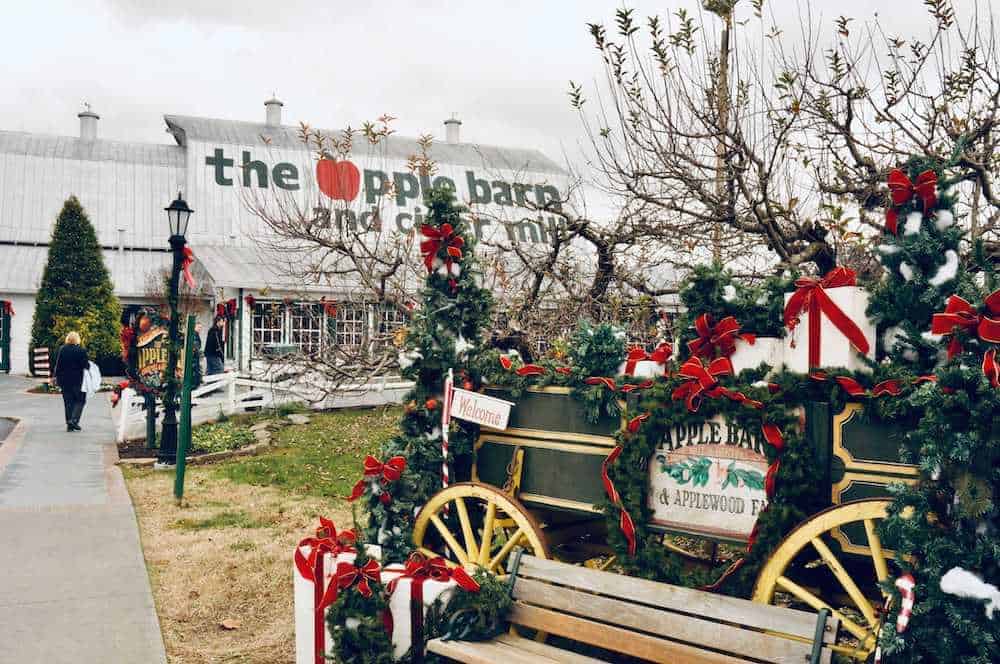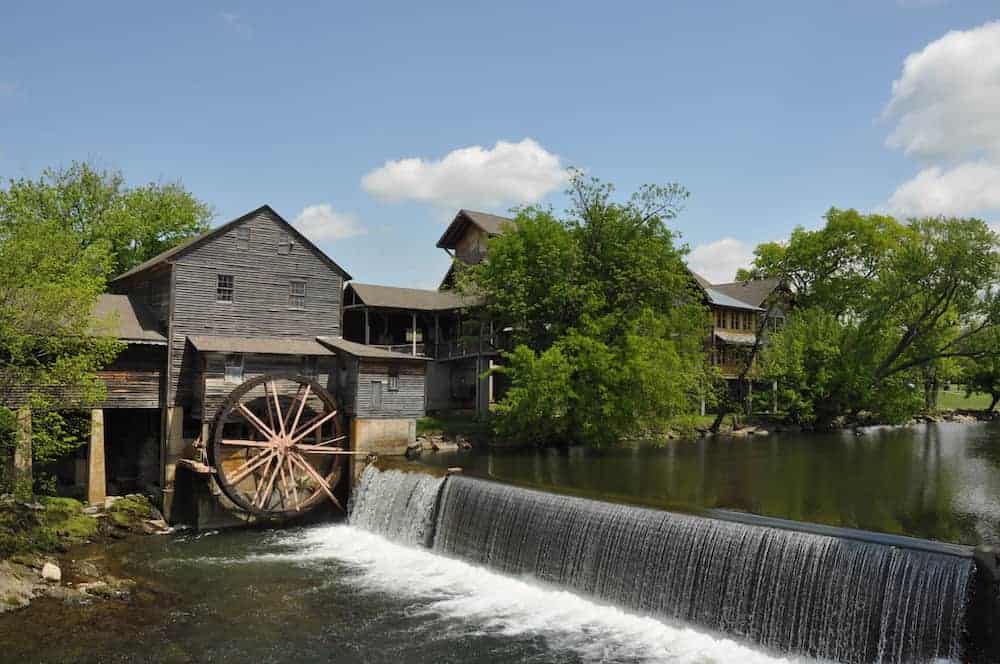
Discover the Fascinating History of The Old Mill in Pigeon Forge
The Old Mill in Pigeon Forge is a historic landmark unlike any other in the area. People come from all over the country to watch the wheel turn on the river and tour the quaint Old Mill Square. Its age, paired with its rich history, make people want to visit every time they’re in town. Keep reading to discover the fascinating history of The Old Mill in Pigeon Forge:
Construction of The Old Mill
In 1817, a man named Isaac Love inherited 151 acres of land from his father-in-law in the Pigeon Forge area. Realizing the resources he had access to, Love built an iron forge along the river that ran through his land. He gathered ore from the land, wood was abundant for creating charcoal to fuel fires for the forge, and the river was used as a power source for the hammer.
In 1830, Love’s sons built the grist mill we all know and love. The mill was used to grind corn for their families and neighbors. Eventually, the building also became the post office for the town. This led to the town being named Pigeon Forge after the iron forge and the passenger pigeons that would roost in trees along the river outside of the mill.
Civil War History
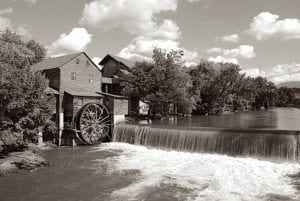 The Love family sold their property in 1859 to a man named John Sevier Trotter, who was now the owner of the mill and iron forge. He used the mill to build several bridges throughout Sevier County. Soon, the Civil War started in the United States. Tennessee was the last state to secede from the Union, but East Tennessee was split between the Union and the Confederacy. Trotter was a Unionist, and he secretly used the second floor of the grist mill to make uniforms for soldiers while the third floor was used as a hospital. Today, the Old Mill is on Tennessee’s Civil War Trail.
The Love family sold their property in 1859 to a man named John Sevier Trotter, who was now the owner of the mill and iron forge. He used the mill to build several bridges throughout Sevier County. Soon, the Civil War started in the United States. Tennessee was the last state to secede from the Union, but East Tennessee was split between the Union and the Confederacy. Trotter was a Unionist, and he secretly used the second floor of the grist mill to make uniforms for soldiers while the third floor was used as a hospital. Today, the Old Mill is on Tennessee’s Civil War Trail.
Getting Some Upgrades
The mill’s water wheel and a bridge were washed away in a flash flood in 1875, and the town worked to replace them. Production demands increased, so Trotter added a water turbine to create more power, and roller mills were added so wheat could be ground into flour. Then, in 1920, another flash flood came through and destroyed the wheel and the steel bridge, and they both were replaced again.
Let There Be Light
The Old Mill in Pigeon Forge has been many things over the years, and one more fascinating part it played in Sevier County history was being the source of electricity. In 1920, when electricity was becoming more widespread, the wheel at the mill was used to give residents power. It wasn’t until 1933 that electricity was run from Sevierville to Pigeon Forge, and the mill didn’t have to provide power anymore.
Changing of Hands
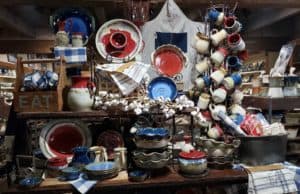 When the Great Depression hit, thousands of businesses suffered, including Trotter’s. The Old Mill was given to the Bank of Sevierville, and 6 months later, it sold to Fred Stout in 1933. Other parts of the original Love property were sold, because in 1946, a man named Douglas Ferguson bought the 100-year-old tobacco barn that was on the property. Ferguson turned the barn into a workshop where he created pottery from red clay. Ferguson started Pigeon River Pottery, and you can still see potters work in person in the shop today. He also built his home right next door, and you can see the original stone fireplace when you eat at The Old Mill Pottery House Cafe and Grill.
When the Great Depression hit, thousands of businesses suffered, including Trotter’s. The Old Mill was given to the Bank of Sevierville, and 6 months later, it sold to Fred Stout in 1933. Other parts of the original Love property were sold, because in 1946, a man named Douglas Ferguson bought the 100-year-old tobacco barn that was on the property. Ferguson turned the barn into a workshop where he created pottery from red clay. Ferguson started Pigeon River Pottery, and you can still see potters work in person in the shop today. He also built his home right next door, and you can see the original stone fireplace when you eat at The Old Mill Pottery House Cafe and Grill.
Gaining Popularity
Ever since President Franklin D. Roosevelt announced the plans to create the Great Smoky Mountains National Park, tourism to East Tennessee picked up. In the 1950s and 60s, more people came to the area, and that’s when The Old Mill in Pigeon Forge was officially named. It became such a popular place to visit that the mill was put on the National Register of Historic Places in 1975.
Recent History of The Old Mill
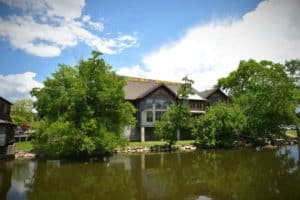 Since so many people were traveling to Sevier County, people launched businesses to capitalize on the booming tourism. Three families came together and opened Cornflour Restaurant next to The Old Mill. It was named Cornflour because they used flour and cornmeal ground by the mill. The Stout family decided to retire, selling the property to these families. They renamed the restaurant The Old Mill Restaurant.
Since so many people were traveling to Sevier County, people launched businesses to capitalize on the booming tourism. Three families came together and opened Cornflour Restaurant next to The Old Mill. It was named Cornflour because they used flour and cornmeal ground by the mill. The Stout family decided to retire, selling the property to these families. They renamed the restaurant The Old Mill Restaurant.
Both restaurants serve meals on the pottery made at Pigeon River Pottery to this day. All of the flour and cornmeal at the restaurants are ground by the mill and used to make all kinds of meals, bread, and desserts. In addition to great food, Old Mill Square has other shops you will want to explore. The Old Forge Distillery pays homage to the Scot-Irish settlers who came to the area and the complicated history of moonshiners. You can taste signature liquors at the distillery, including whiskey and moonshine. The Old Mill General Store has hundreds of Smoky Mountain themed souvenirs, sweet jams and jellies, and other knick knacks you can take home. There’s also a candy kitchen, a creamery, and other stores.
More About The Old Mill in Pigeon Forge
With such a fascinating history, it’s easy to see why people love visiting The Old Mill when they come to town. Learn even more about what you can see and do in this guide to The Old Mill in Pigeon Forge!





